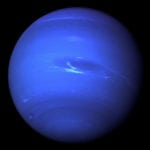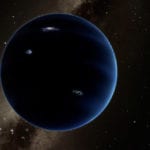 Creepy
Creepy  Creepy
Creepy  Movies and TV
Movies and TV 10 Movies That Get Elite Jobs Right, According to Experts
 Weird Stuff
Weird Stuff 10 Times Real Laws Were Based on Bizarre Hypotheticals
 Animals
Animals 10 Inspiring Tales of Horses Being Human
 Mysteries
Mysteries Top 10 Haunting Facts About the Ghost Ship MV Alta
 History
History 10 Surprising Stories About the Texas Rangers
 Humans
Humans 10 Philosophers Who Were Driven Mad by Their Own Theories
 Miscellaneous
Miscellaneous 10 Video-Game-Worthy Weapons and Armors from History
 Weird Stuff
Weird Stuff 10 Psychics Who Accurately Predicted Wartime Events
 The Arts
The Arts 10 Pieces of Art Inspired by a Broken Heart
 Creepy
Creepy 10 Death Superstitions That Will Give You the Creeps
 Movies and TV
Movies and TV 10 Movies That Get Elite Jobs Right, According to Experts
 Weird Stuff
Weird Stuff 10 Times Real Laws Were Based on Bizarre Hypotheticals
Who's Behind Listverse?

Jamie Frater
Head Editor
Jamie founded Listverse due to an insatiable desire to share fascinating, obscure, and bizarre facts. He has been a guest speaker on numerous national radio and television stations and is a five time published author.
More About Us Animals
Animals 10 Inspiring Tales of Horses Being Human
 Mysteries
Mysteries Top 10 Haunting Facts About the Ghost Ship MV Alta
 History
History 10 Surprising Stories About the Texas Rangers
 Humans
Humans 10 Philosophers Who Were Driven Mad by Their Own Theories
 Miscellaneous
Miscellaneous 10 Video-Game-Worthy Weapons and Armors from History
 Weird Stuff
Weird Stuff 10 Psychics Who Accurately Predicted Wartime Events
 The Arts
The Arts 10 Pieces of Art Inspired by a Broken Heart
Top 10 Great Secrets Of The Solar System
Astronomy is a fascinating thing. The more you learn about the universe, the more you realize there is to know. Discoveries often throw up more questions than they do answers.
But the great secrets of outer space are not all hidden in black holes and far-off galaxies. Some of them are a lot closer to Earth than you might imagine. From the ice dunes of Pluto to Jupiter’s luminous moon, the solar system is home to all kinds of elusive and mind-boggling phenomena. This list looks at some astonishing secrets of the solar system that scientists are in the process of unraveling.
10 Hypothetical Planets That Could Exist In Our Solar System
10 Strange Things Dwell in the Clouds of Venus

The skies of Venus are teeming with strange and elusive things. Scientists say we can learn a lot from the clouds that swarm over our neighboring planet. Astronomers reckon Venus was once a lot like Earth. Its surface was covered in great lakes and oceans. But toxic gases and environmental warming scorched the planet, turning the wetlands of Venus into the arid landscapes we see today.
But perhaps, scientists wonder, was there once life on the nearby planet? And, if so, could that life have survived by ascending into the clouds? Around thirty miles (fifty kilometers) above the surface of Venus, the temperature and pressure are said to resemble those here on Earth.
Entrepreneur Peter Beck is obsessed with Venus. In 2023, his company Rocket Lab plans to send a robot to search the clouds of Venus for signs of extra-terrestrial life. The Californian spacecraft firm hopes to find living beings floating miles above the barren ground.
“We’re going to learn a lot on the way there, and we’re going to have a crack at seeing if we can discover what’s in that atmospheric zone,” Beck explained. “And who knows? You may hit the jackpot.”
9 Space Hurricane Looms over Earth
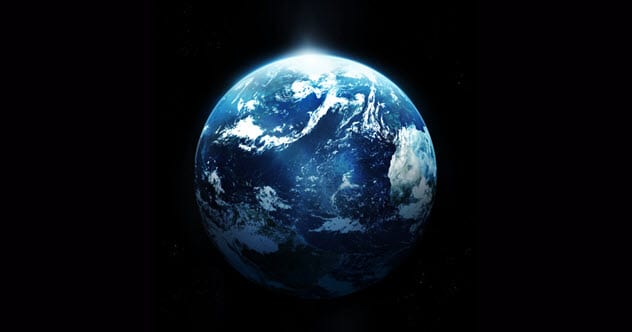
In 2014, scientists noticed a strange vortex swirling high above the North Pole. The unusual spiral of auroral light measured over 600 miles wide, dazzling the skies for eight hours before fading into the night. But, until recently, researchers struggled to explain what the giant patch of light was and why it was there.
Now, physicists at Shandong University in China have managed to shed some light on the situation. Using satellite data collected during the Cold War, Qing-He Zhang explained that the mysterious ‘space hurricane’ was a large spiral of electrically charged gas. Celestial whirlpools like the one seen in 2014 are created by showers of electrons ejected from the sun. The minuscule particles cascade through the Earth’s magnetic field, crashing into gas atoms in the upper atmosphere and releasing bright flashes of light. Zhang and his team reckon space hurricanes may have occurred before 2014, but this is the first time scientists have identified one.
8 Methane Points to Life on Mars
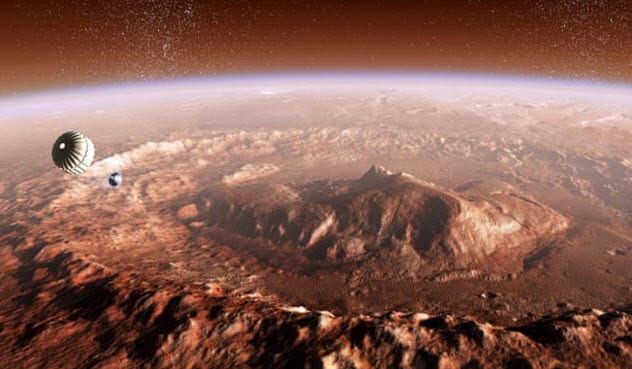
Is there life on Mars? David Bowie famously sang about the prospect of aliens dwelling on the Red Planet. Now, we have evidence that there may be creatures up there.
Astronomers have detected methane on Mars several times. The presence of the gas has led some scientists to speculate that life could exist on the Red Planet. On Earth, living organisms are the most common producers of methane. It would follow that it could be the case on other planets too. Every time new scientists find new evidence of Martian methane, they come one step closer to discovering if anything lives on our neighboring planet.
In 2019, NASA’s Curiosity vehicle uncovered a surge of methane gas in Mars’ atmosphere. The record-high spike was detected inside Gale—a 154km-wide (96 mi) crater that the rover has been scoping out since it landed in 2012. This is not the first time Curiosity has come across spikes of methane. The exploration rover detected gas twice from 2013-14, but these were significantly lower than the latest measurements.
The remarkable discovery hints at extraterrestrial life, but it is not definite proof of Martian microbes. Methane is also produced through geological processes, like certain rock minerals reacting with water. Astronomers need to gather more evidence before they can identify the source of the gas.
7 Ice Dunes Spotted on Pluto
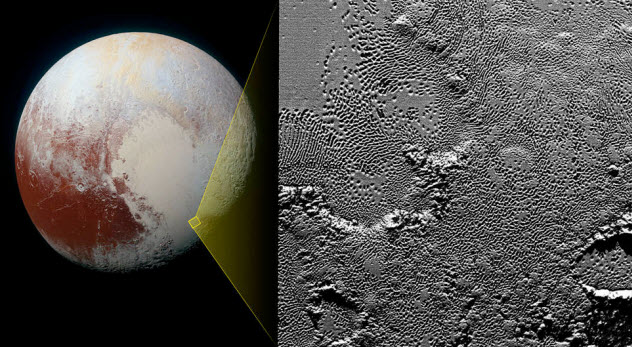
The surface is Pluto is a strange and mysterious place. Scientists used to believe that the dwarf planet was soulless and barren. They reckoned the atmosphere was nowhere near thick enough for dynamic features to form. However, recent footage from NASA’s New Horizons mission has proved otherwise. The photographs reveal that Pluto is teeming with fascinating geographical oddities.
Dunes of frozen methane billow across the Sputnik Planitia plains. A vast range of mountains of water ice stretches alongside them, each jutting out around 5km (3mi) high. The mounds are formed from tiny crystals of methane—around the same size as a grain of sand—that have been whipped up by glacial winds from the nearby mountains. The dunes are also thought to contain frosted nitrogen crystals.
Pluto is the latest addition to a growing list of celestial bodies on which astronomers have spotted dunes, which includes Venus, Titan, and the comet 67P.
6 Mysterious Hum Detected on Mars
When NASA launched its InSight lander to study Mars in 2018, nobody expected it to find the planet humming. But that is precisely what the spacecraft detected. According to InSight’s readings, the Red Planet is emitting an endless hum punctuated by quakes and tremors. And nobody can figure out why.
The craft is equipped with a high-precision seismometer and a range of detectors. Researchers say that data from InSight has already revealed an enormous amount about the planet’s structure and magnetic field. Since it landed, the lander has recorded over 450 cases of seismic activity – or, as some experts call them, ‘marsquakes.’ Unlike Earth, Mars has no tectonic plates, which means scientists are still trying to work out exactly how the quakes are caused.
But the most surprising of InSight’s discoveries is the mysterious Martian hum. The seismic signal buzzes away at 2.4 Hz and seems to grow louder when the planet quakes. Researchers are unsure about the origins of the unexpected throb, although they have ruled out the wind.
5 Methane Rain on Saturn’s Largest Moon
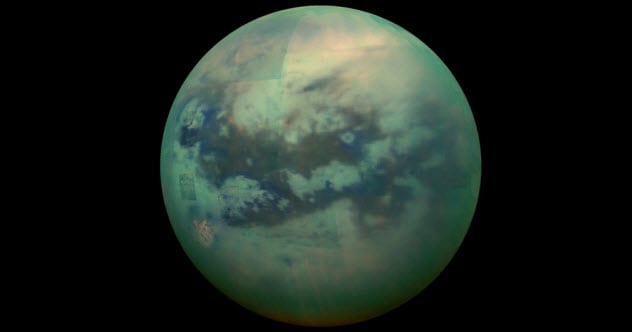
Titan, the largest of Saturn’s moons, has several unusual weather patterns. Apart from Earth, it is the only known body in the solar system where liquid rain falls on a solid surface. However, unlike Earth, the rainfall on Titan is infrequent. According to NASA’s Cassini orbiter, there are areas of Titan that only receive rainfall around once every thousand years—and instead of water, it rains methane.
It might not rain often on Titan, but when it does it pours. Meters of rainfall can come cascading down in one shower. This severe battering etches deep river channels into the surface of the moon. Astronomers have even discovered vast lakes and seas of liquid methane.
One of the mysteries puzzling scientists is the lack of cloud cover around the North Pole. During a study of sunbeams on the moon, scientists recently observed rainfall during Titan’s summer for the first time. However, they were stumped why they had not spotted any clouds. Cracking this conundrum could expand our understanding of weather patterns in general. But for now, it remains unknown.
4 Europa, Jupiter’s Icy Moon, Might Glow in the Dark
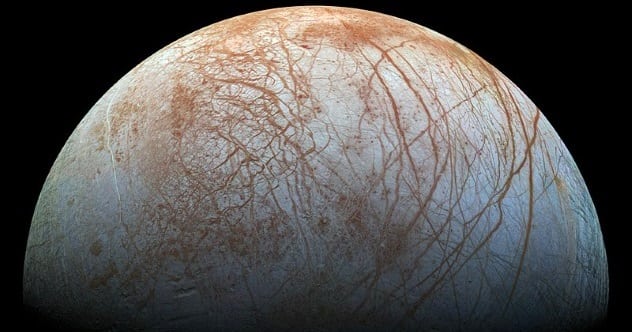
A new study suggests that one of Jupiter’s moons might glow in the dark. Researchers reckon that Europa could emit a greenish glow caused by the intense radiation from Jupiter’s magnetic field.
Europa is known for being coated in a thick layer of ice. The frosted moon faces an endless barrage of electrons. When the charged particles slam into Europa’s icy surface, they transfer some of their energy to the molecules in the ice. The energized molecules then release that energy as light, which scientists say could give the moon an eerie shimmer.
3 Strange Mass Hiding Under the Surface of the Moon
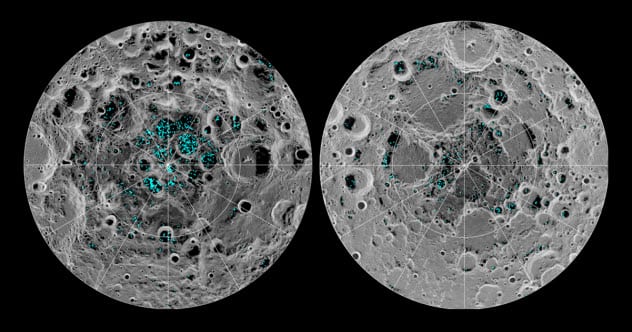
Beneath the largest crater in the solar system lies a giant hunk of metal and no one is sure what it is doing there. The elusive mass is thought to be around five times the size of the Island of Hawai’i, nestled under the South Pole-Aitken basin on the far side of the moon.
The crater is roughly oval-shaped, over 1,200 miles wide, and many miles deep. Astronomers reckon it was created four billion years ago. But the mass itself lies hundreds of miles underground. Scientists discovered the metal anomaly during a study of the moon’s surface and gravitational field.
Scientists are keen to discover the origins of this puzzling underground lump. One theory states it could have come from the asteroid that blasted the crater into the moon’s surface. The core of a meteorite is often made of iron-nickel alloy. Computer simulations have shown that this metallic core could have become lodged in the moon’s mantle. Another suggestion is that the mass is related to oceans of liquid magma cooling down and solidifying.
2 The Mystery of Rust on the Moon
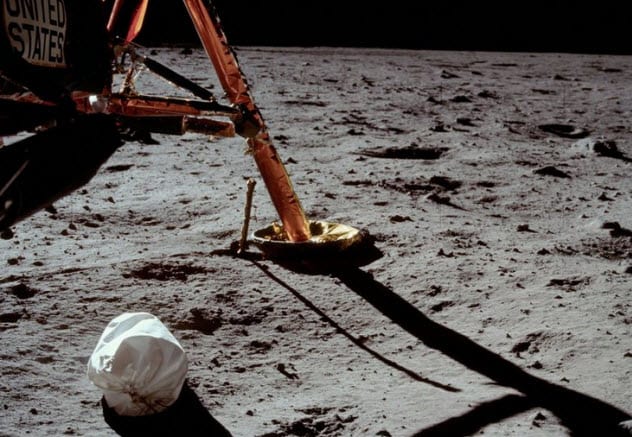
As you are surely aware, iron starts to rust after long periods around oxygen and water. So you can imagine the surprise when astronomers discovered rust on the moon. Using data from India’s Chandrayaan-1 mission, Hawai’ian researcher Shuai Li showed clear signs of iron oxide or, as it is more commonly known, rust on the lunar surface.
At first, scientists were flummoxed by Li’s findings. How does rust form in a place without any oxygen? On top of that, solar winds subject the moon to an onslaught of hydrogen atoms. Hydrogen is known to give away its electrons, making it even more difficult for iron to oxidize. Rust on the moon should be impossible, and yet the evidence was beyond dispute.
Then came the breakthrough. Astronomers discovered that the answer lies in the shape of the Earth’s magnetic field. Earth is also constantly whipped by solar winds, which squash and distort the planet’s magnetic field. This causes the part of the field furthest from the sun to stretch backward, like a tail. This magnetotail extends 240,000 miles (385,000 kilometers) into space.
During its orbit of the Earth, the moon dips briefly inside the magnetotail. At this point, the Earth shields the moon from its usual bombardment of hydrogen. The magnetic field also deposits small amounts of oxygen on the surface of the moon. For just a moment, the conditions are right for rust to form.
1 ʻOumuamua, the Solar System’s first known Visitor
In 2017, a giant cigar-shaped structure became the first known interstellar object to visit the solar system. The strange visitor left scientists scratching their heads as it hurtled around the sun at 196,000 miles per hour.
Astronomers know that ʻOumuamua – whose name means “a messenger from afar arriving first” in Hawai’ian – sped into the solar system from somewhere else in space. They reckon it measures around half a mile (800 meters) in length and a tenth of that in width. They predict that the cosmic traveler should tumble through the sun’s orbit for a while before shooting off again.
Other than that, little is understood about the elusive wandering object. According to NASA, scientists have no real idea what ʻOumuamua looks like, what it is made from, or from where it came. There a currently an array of telescopes around the world and in space trailing the mysterious visitor.
10 Radical Ideas To Colonize Our Solar System
